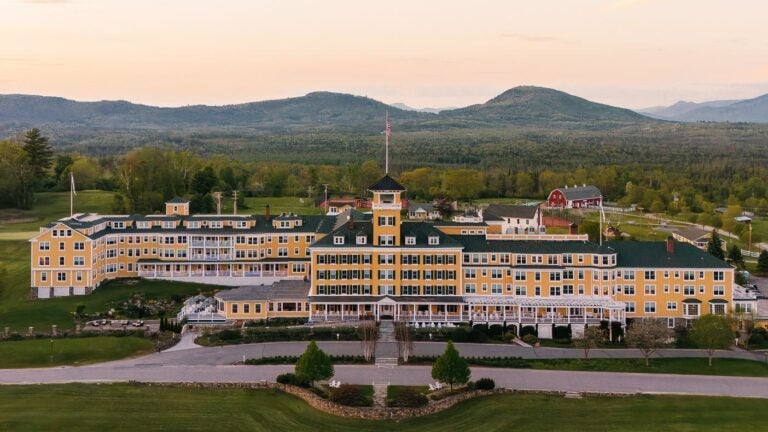Jobs
Baylor needs more blue-collar student jobs – The Baylor Lariat

By Josh Siatkowski | Staff Writer
Last week, I read a 2017 article in Forbes Magazine titled “How Colleges Rip You Off.” As you’d assume, it is not kind to the institution of higher education. Author Richard Vedder — a former economics professor at Ohio University — uses his words to cut deeply into the ballooning, unnecessary fat that’s making college more and more unaffordable.
Vedder slams college business offices, claiming money is wasted on the fact that there are now double the number of non-teaching professionals on campuses. He mocks ostentatious “investments” made by schools, like lazy rivers and indoor rock walls — which, as a fan of our climbing and bouldering walls, hit a little close to home. He even goes so far as to call a majority of funded research “obscure” and pointless, writing that three papers on Shakespeare are published every day and asking, in the spirit of an economist, “Doesn’t the Law of Diminishing Returns apply to academic research?”
I’m only summarizing Vedder’s arguments. If you want to hear more behind the reasoning of his long-winded attack on college tuition, I’d suggest reading it yourself. But a warning for any faithful of the green and gold: It might leave you questioning your own college decision and wondering how “good” the faces behind that good old Baylor Line really are.
On a lighter note, Vedder recognizes that a number of schools actually work with their students to keep these costs low — and not just $10,000 off your $70,000 tuition. Try no tuition at all.
Berea College is a liberal arts college in rural Kentucky, home to just 1,454 full-time students. Geographically, philosophically and culturally, it’s vastly different from Baylor. But the biggest difference between the two is the cost: Berea has zero tuition.
Now, before moving on, let’s make something clear: I do not bring up this statistic to claim that Baylor should be free. Our resources, living standards, prestige and exit opportunities far exceed those of little Berea College. Not to mention, Berea is a school specifically for low-income students.
With that said, however, Berea’s differences don’t mean that Baylor shouldn’t be learning from them. After all, a school that can charge no tuition without descending into the financial equivalent of nuclear fallout must be doing something right. And it is.
Berea is one of 10 schools in the United States that is part of the Work College Consortium. According to the Consortium’s website, it’s a “group of distinctive student-centered liberal arts colleges promoting the purposeful integration of Work-Learning service while helping to reduce the cost of education.”
In layman’s terms, students at these schools are required to work to help cover the costs of attendance and keep the university’s labor and maintenance costs low.
At Berea, students work between 10 and 20 hours per week in a number of jobs. While student work is common at Baylor and most universities, work at Berea looks different. Typical types of student work include manning front desks, guiding tours and assisting with research, but Berea offers more blue-collar positions. Admissions videos show footage of students repairing bikes and cars, mowing lawns and even farming produce for the dining halls.
Although there are a few opportunities for students in these areas at Baylor, options are limited and don’t seem to be growing. However, there are a number of benefits to this different style of work — enough for me to argue for its adoption at Baylor in the near future.
The first and biggest reason is that these jobs would help reduce costs more than most current student work positions. Although it’s nice that Baylor doesn’t have to add research assistants or receptionists to full-time payroll, these costs are not burdensome when compared to others.
Outsourcing services like dining, maintenance, facilities and groundskeeping — all of which are areas where Berea has extensive student work programs — generally account for significantly more costs than the previously mentioned ones. Now, I’m not suggesting that we get rid of our facilities and dining providers; I’d be horrified to leave my diet in the hands of a few freshmen rather than professional chefs. However, we could do a better job of giving students more of these opportunities, especially now that we are already switching facilities service providers this June.
That brings me to my second reason. We contracted Aramark for 68 years for all facility-related services. Since we’re already in the process of changing, now seems like the easiest time to tack on a few more student work positions on the blue-collar side of things.
Ultimately, I’d love to see it happen. Students could learn practical skills, make some spending money and even help lower the costs of the university. Now, just because it would lower the operating costs of the university doesn’t mean it would be reflected in a tuition drop — especially when you remember the sentiments in Vedder’s article.
You might be asking, what kind of college student would want to do manual labor or trade work? And while I know a few students who would turn their noses up to this kind of job, I think most understand the value and importance of these positions, which brings me to my third reason.
Students would learn valuable skills working these jobs, and I don’t just mean humility or the importance of hard work. Learning to repair an air conditioner or fix a burst pipe is not a pointless skill, even if it doesn’t necessarily align with your degree.









